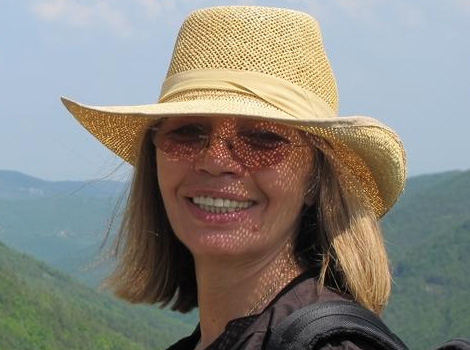Thrace, a Gate to Immortality is the title of a brand new documentary featuring celebrated monuments from the Classical Antiquity, more notably the ones found in the Valley of Thracian Kings, Central Southern Bulgaria. It is common knowledge that the ancient Thracians had firm faith in immortality and this was reported by Hellenic writers, among them Herodotus and Plato.
 The new film is part of a project financed by the European Heritage Network. It comprises 19 countries, including Bulgaria. Renowned Thracian studies scholar Prof. Valeria Foll, one of the film's authors, explains that it aimed to carry out monitoring of the Classical Antiquity heritage in the Bulgarian lands and the way it is featured online, because so far internet resources about it are pretty scarce, according to her. „With this film we have filled in a gap”, she argues. “Fact is that we have a lot of footage and photographs, because the monitoring was meant to show the shape of monuments. There is also footage of the natural scenery and the landscapes where monuments have been found. Once such diverse footage was generated, the young crew decided to make a film, and they did it for free. The film has a music background and English language subtitles. And I must say the result is quite good in terms of visual quality and content useful for viewers.”
The new film is part of a project financed by the European Heritage Network. It comprises 19 countries, including Bulgaria. Renowned Thracian studies scholar Prof. Valeria Foll, one of the film's authors, explains that it aimed to carry out monitoring of the Classical Antiquity heritage in the Bulgarian lands and the way it is featured online, because so far internet resources about it are pretty scarce, according to her. „With this film we have filled in a gap”, she argues. “Fact is that we have a lot of footage and photographs, because the monitoring was meant to show the shape of monuments. There is also footage of the natural scenery and the landscapes where monuments have been found. Once such diverse footage was generated, the young crew decided to make a film, and they did it for free. The film has a music background and English language subtitles. And I must say the result is quite good in terms of visual quality and content useful for viewers.”
It is an interesting detail that the crew has also shot footage from the air - along the valley of the River Tundja. In this way, viewers can feast their eyes on the magnificent nature along one of the rivers that served as arteries for communication of the Thracians with the Mediterranean world. The film presents some symbolic monuments of Thracian culture: the tombs of Kazanlak, Alexandrovo, Shoushmantes and Arsenalka. If we take Arsenalka, archeo-astronomical research suggests that the place operated as an observatory. There is also footage of the largest known dolmen in the territory of Bulgaria - the one near the village of Hlyabovo (Southeastern Bulgaria).
In what countries have Thracians left the most diverse heritage?
„The Thracian tribes populated vast areas in Europe starting from Dnepr and Dniester to the Carpathians, the Black Sea, the Northern Aegean coast and the adjacent islands in Northwestern Asia Minor”, Valeria Foll says. “In fact Bulgaria falls into the center of this territory. Our historical chance is that the political and religious centers of the largest Thracian kingdoms, the Odrysae, the Triballi, the Getae and the Bessi, were all found in the present-day Bulgarian lands. No wonder then that Bulgaria has one of the most impressive monuments, all the more so that the Odrysae were an active political and economic partner of the Mediterranean world and especially of Hellas. Other valuable monuments are found in Romania, Moldova, Eastern Serbia and Northern Greece, and of course in Turkey, in both its European and Asia Minor parts. However Bulgaria has succeeded in making the Thracians one of its heritage brands. In 1970s the Institute of Thracian Studies was founded and a representative exhibition that traveled a few countries. With this Bulgaria wisely and quite successfully claimed a niche for communities and cultures alternative to the Hellenic ones. I mean that we have solid legacy from the scholars of the earlier generation. It is important to keep the position that we have already claimed on the 'playbill', so to speak, of science and culture in the world.”
What are the chances of the Valley of Thracian Kings to get on the UNESCO list of archeological landscapes?
„Generally speaking, there are very strong chances. But for this to take place the Bulgarian side has to generate a database, devise and follow a strategy of development of sites and landscape. I believe that the film is a step in this direction. We must have such films that are shown not only online but also in museums, presenting monuments and their current state. Let me make another point here: our footage and photographs provide ample opportunity for research of frescoes. They are very specialized and are useful to scholars. We need this kind of a database. And I hope that the Municipality of Kazanlak, the museums and of course, the Ministry of Culture, will make this worthy effort.”
English Daniela Konstantinova
A colorful graffiti mural, created in connection with the 20th anniversary of Bulgaria's membership in NATO, was unveiled in Blagoevgrad (Southwestern Bulgaria). The street-art work can be seen at 65 Slavyanska Street. It was realized with the..
Over 100 films and various discussions on current issues await those who seek a first-hand account of events in Ukraine at the fifth edition of ОКО - International Ethnographic Film Festival. For the first time, the festival is a Ukrainian-Bulgarian..
The exhibition "The Transylvanian Medieval Fortress" by the Romanian artist Ovidiu Carpusor will be presented from November 9 to 23 in the "Quiet Nest" gallery of the Palace Architectural Park Complex in the town of Balchik , on Bulgaria's Northern Black..

+359 2 9336 661
